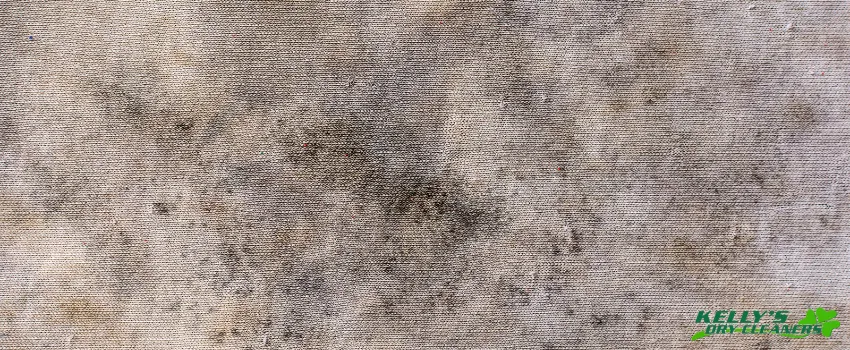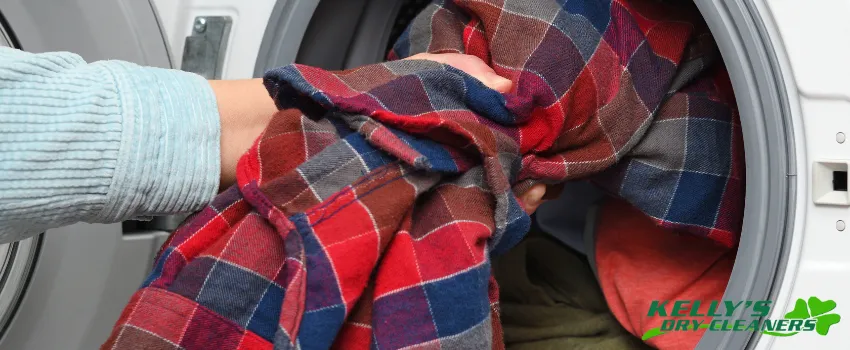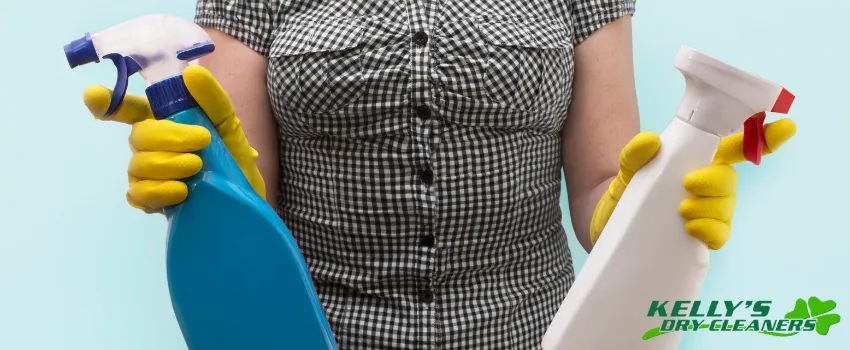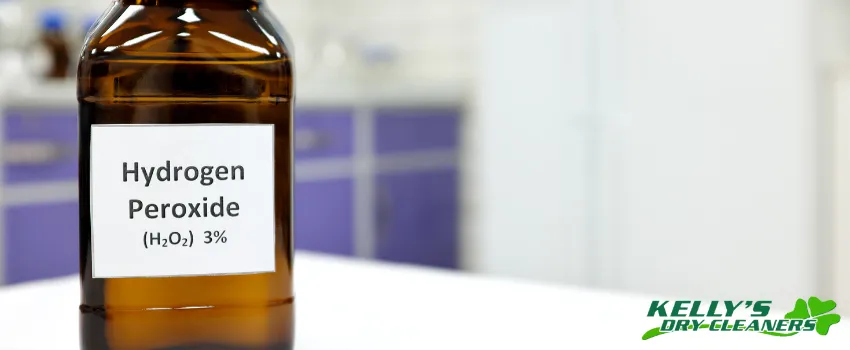Mold on clothes is not something to overlook. It can cause health problems, so properly dealing with it is crucial. Mold can make you sick and affect your breathing, especially if you have a weak immune system. It can also spread to other items or surfaces, making the problem harder to fix.
Before we get into the solutions, let’s talk about what mold on fabric is. Mold is a fungus that grows in damp and humid conditions. Regarding fabric, it appears as discolored patches and emits a musty odor. If clothes are stored in moist areas or exposed to water damage, mold can grow on them.
Thankfully, you don’t need expensive products to tackle mold on your clothes. Readily available household items can help you get rid of mold successfully. This blog post will show you how to use everyday items to remove mold from clothes, saving you money and effort.
What Are the Two Types of Mold?
There are two common types of mold stain on clothes, namely:
1. Black Mold
Black mold is a term used for molds that appear black. The “black” mold species typically exhibit a greenish-black hue and thrive on surfaces rich in cellulose, such as paper and fiberboard. When damp clothing is left in a laundry room with cellulose materials, it can result in the development of black mold.
2. White Mold
White mold is a common type found in homes, especially on clothes like jackets and shoes. Sometimes, it can be mixed up with efflorescence, which happens in buildings.
Efflorescence is when water moves through a structure and leaves behind white salt tracks. To tell if it’s white mold or efflorescence, you can spray water on the area. It’s probably efflorescence if it disappears, but if it stays, it’s likely to be mold.
Can You Put Moldy Clothes in the Washing Machine?
When deciding whether you can wash moldy clothes in the washing machine, there are factors to consider.
1. Severity of the Mold Infestation
If the mold stain on clothes is minimal, you can wash them in the machine safely. However, if the mold has spread extensively, you should take extra precautions before washing.
In such cases, pre-treat the moldy areas with a mold-fighting solution, such as vinegar or hydrogen peroxide. After pre-treatment, thoroughly inspect the clothes to ensure no visible mold remains. If there are still signs of mold, it’d be better to seek professional cleaning services.
2. Fabric Type and Care Instructions
Consider your clothes’ fabric type and care instructions. Delicate fabrics may not be suitable for machine washing, especially if heavily soiled with mold. Check the garment’s care label or seek professional advice for guidance.
As a reminder, always follow the clothing manufacturer’s care instructions. If it says “dry clean only” or “do not machine wash,” follow those instructions to prevent fabric damage. For machine-washable fabrics, choose the appropriate washing cycle and water temperature.
3. Washing Machine Capability
Your washing machine’s condition is also a significant factor in whether you can use it to remove mold from fabric.
It’s non-negotiable that your machine is clean and free from mold or mildew buildup. Regularly cleaning your washing machine helps prevent cross-contamination and ensures you efficiently remove mold from your clothes.
If your machine offers a specific cycle or setting for heavily soiled items, this option can provide a more thorough cleaning. By maintaining good washing machine hygiene, you’ll get the best results and prevent the spread of mold to other garments.
What Kills Mold on Clothes?
Dealing with mold on clothes can be a hassle, but effective solutions are available. Here are the household items you can use to remove mold from fabric:
1. Bleach
Bleach is a powerful household item you can use to eliminate mold. It works by breaking down the mold’s structure and eliminating its spores. However, you must ensure the fabric is bleach-safe and follow proper safety precautions.
To use bleach:
- Create a solution by mixing one cup of bleach with one gallon of water.
- Soak the moldy clothes in this solution for about 15 minutes.
- Rinse the clothes thoroughly with clean water and wash them as usual.
2. Vinegar
When it comes to how to get mold out of clothes, vinegar is your safest bet. Vinegar’s acidic nature helps to kill mold spores, prevent further growth, and eliminate musty odors, making it the optimal and most affordable solution.
To use vinegar:
- Mix equal parts vinegar and water to create a solution.
- Apply the vinegar solution directly to the moldy areas of the clothes.
- Allow the solution to sit for a while to penetrate and kill the mold.
- Wash the clothes as usual, following the garment’s care instructions.
3. Warm Water
Does heat kill mold? It absolutely does.
Warm or hot water can be fatal to all organisms, molds included. When washing infested clothes, add warm water — only then can you get mold out of your clothes. Warm water can easily kill the mold and help you clean the infected clothes.
4. Borax
Some clothes can’t be washed and need to be dry-cleaned. When these clothes get moldy, it can be challenging to remove the mold.
Dry cleaners often use a white powder called borax to remove mold from clothes. Borax is excellent at removing mold because it has strong properties that can kill mold spores and eliminate mold stains.
5. Hydrogen Peroxide
Hydrogen peroxide is commonly found in first aid kits because it’s an effective disinfectant. It can reliably kill bacteria and fungi.
To use hydrogen peroxide:
- Dilute hydrogen peroxide with water in a 1:1 ratio.
- Apply the mixture directly to the moldy areas of the clothes.
- Allow it to sit for a few minutes to penetrate and kill the mold.
- Wash the clothes as usual.
Should You Throw Away Clothes With Mold?
Sometimes, you’d think the fastest and most straightforward solution would be to throw away clothes with mold. However, it’s not always necessary to take such drastic measures.
When considering whether to discard moldy clothes, evaluate how severe the mold infestation is. If the mold has deeply penetrated the fabric, making it challenging to eliminate, it may be more practical to dispose of them.
Nonetheless, if the mold is not widespread and the clothes hold sentimental value, professional cleaning services may be worth considering. Remember to prioritize your safety throughout the process and seek professional advice before making a final decision.
Key Takeaway
With some patience and the right knowledge, you can remove mold from clothes successfully and restore them to a clean condition. By acting fast and using household items, you can thoroughly eliminate mold and prevent further damage. Don’t let mold ruin your favorite garments when there are easy solutions to fix the problem.
Say goodbye to pesky mold on clothes with Kelly’s Dry Cleaners.
If you can’t remove the mold from your clothes, you can turn to Kelly’s Dry Cleaners. We provide trustworthy Farmington laundry services that will make your garments good as new.
Our experienced team uses advanced techniques and specialized products to remove mold and restore your clothes to their original condition. Call us today to know more!







